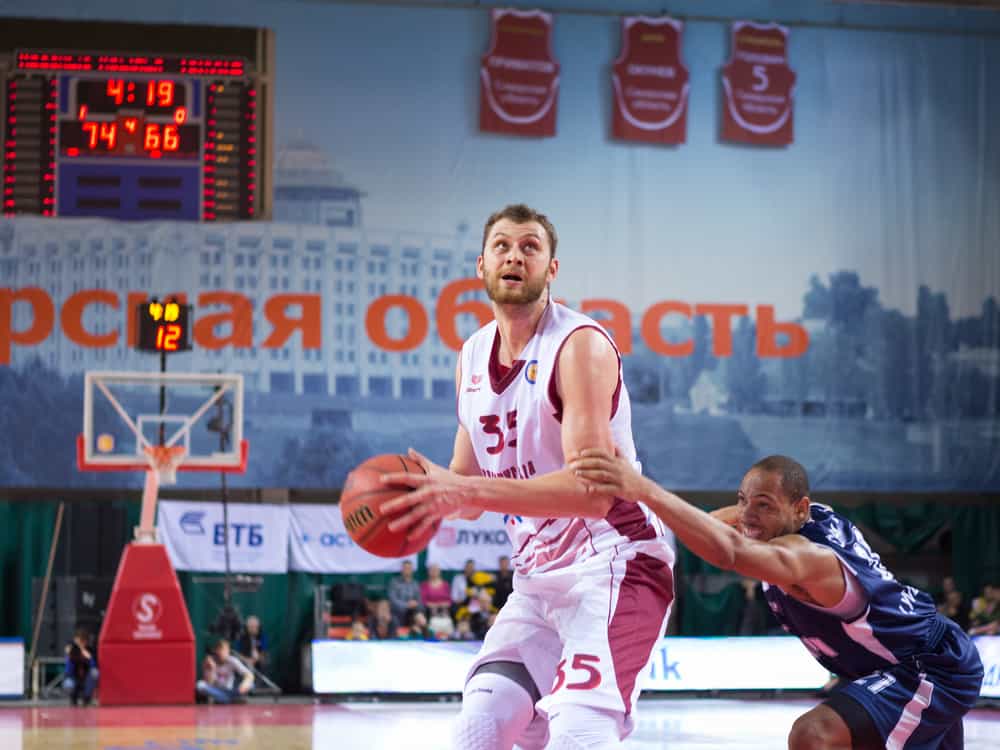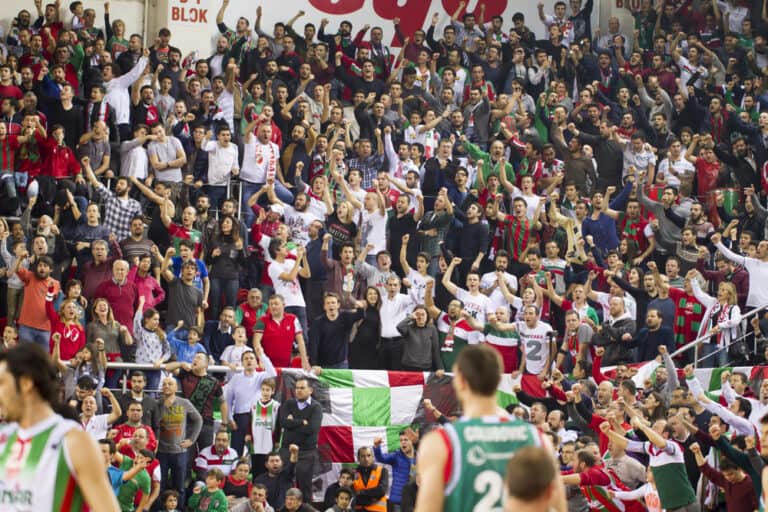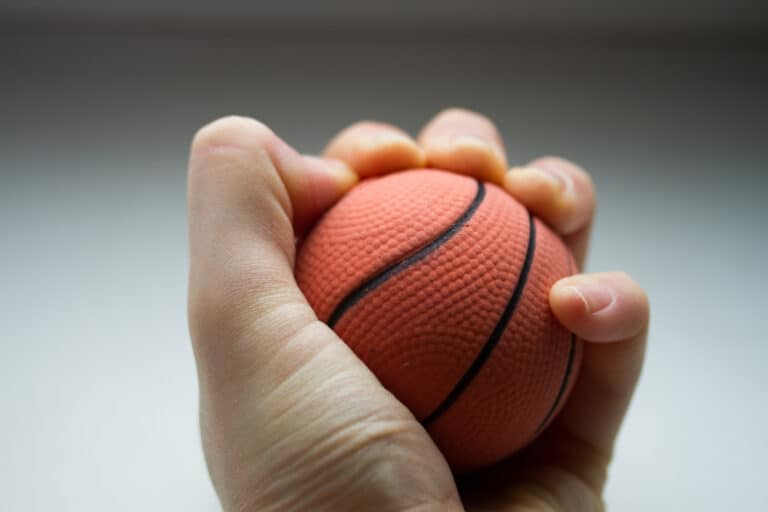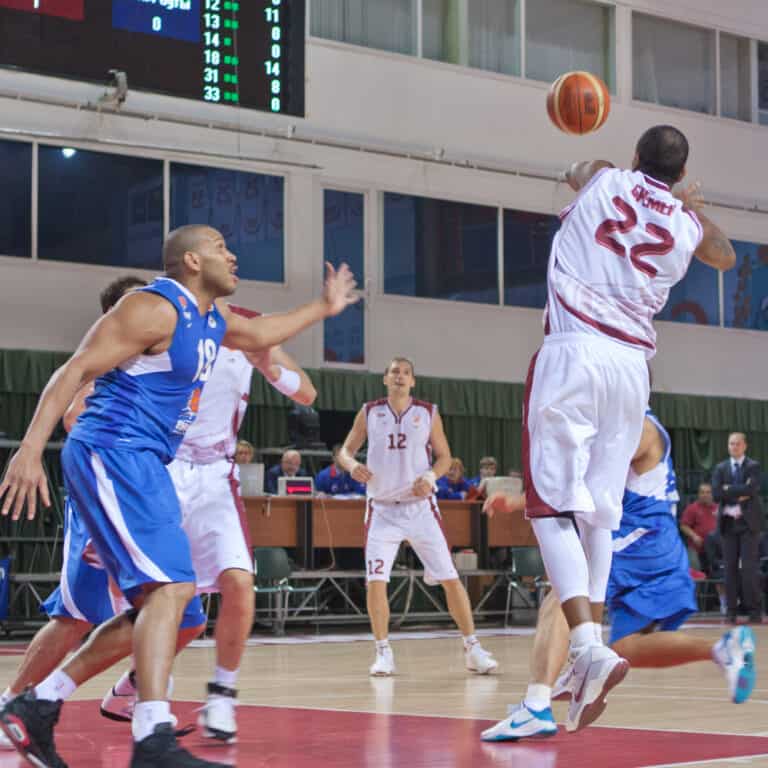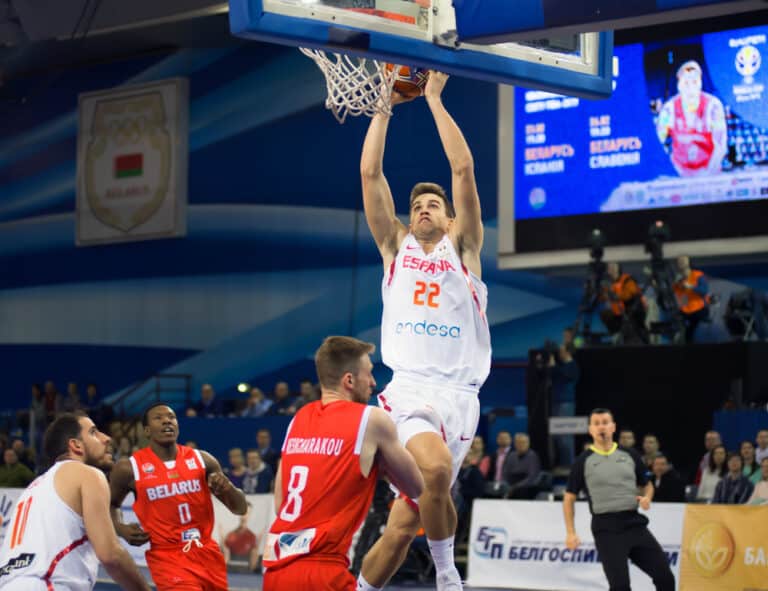What Is Illegal Defense In Basketball (All You Need To Know)
Editorial credit: Pavel Shchegolev / Shutterstock.com
Basketball can be a complicated sport to understand, especially if you’ve never watched it before. There are many rules, and fouls can be blown in many different scenarios, especially against defending players. But let’s look at what actually is illegal defense in basketball.
Some illegal defenses in basketball are a shooting foul, a personal foul, a moving screen, a three-second violation, and a flagrant foul. All of these have varying degrees of punishment. Still, all of them typically result in two free throws awarded to the attacking team.
Each foul occurs in a different scenario, and all have different requirements to be given as fouls. So, let’s get into it and take a look at these illegal defenses in basketball in a bit more detail.
What Is Illegal Defensive Contact In Basketball?
Multiple types of illegal contact can be made by a defending player in basketball. All of these will result in a foul being called and sometimes, depending on the location of the foul, a free throw (or two) being awarded to the attacking team. Any free throw awarded will always be taken by the fouled player.
Here are some of the fouls a defending player can commit in basketball.
Shooting Foul:
A shooting foul occurs when an attacking player is in the process of taking a shot at the basket, and the defensive player makes contact with the shooter. A defensive player may only block the ball being shot and not make contact with the attacking player.
The attacking player will be awarded two free throws if a shooting foul is called. The first will be uncontested, but the second will be contested, meaning the two teams may challenge for the rebound. However, suppose the attacking player sinks the shot despite the contact from the defender. In that case, only one free throw will be awarded. This will be a contested free throw.
Personal Foul:
Basketball is not a contact sport. While it is a physical sport where players can compete for loose balls and can use their bodies to defend another player, players may not make serious physical contact with another player. This means pushing or deliberately bumping into other players is illegal and will result in a foul and two free throws being awarded.
Sometimes, a defending team may deliberately foul another player. This might be done to preserve time or to prevent a player from driving to the hoop. In the latter scenario, you are relying on the player not being accurate from the free throw line but has a powerful jump, meaning the chances of them scoring if they can drive to the hoop are high.
Why Is A Moving Screen Illegal In Basketball?
Before analyzing why a moving screen is illegal, it is essential to establish what a screen is in basketball. A screen is when an offensive player stands next to a defending player to prevent them from defending their teammate. This ideally leaves their teammate free to pass, shoot, or drive to the net to score. It can also be used to enable an attacking player to receive a pass without being under pressure. Essentially, a screen is designed to block the defending player from participating in the play.
However, once a screen is set by the attacking player, they cannot move to further block the defender. They must set themselves (i.e., keep their feet in the same place) when setting the screen. This means that when the defending player invariably attempts to move around the screen, the screen setter cannot move to try to stop this from happening.
As a moving screen is an illegal defensive technique in basketball, a foul will be called if utilized. This will result in a turnover of possession, and the defending team will be in possession of the basketball for the next play.
What Is A Defensive Three-Second Violation In The NBA?
In the NBA, it is illegal for a defending player to spend longer than three seconds in the free throw lane if they are not actively guarding an opposition player. The free throw lane, which is also known as the key, is the area surrounding the basket where players stand during a free throw. (EXPLANATORY GRAPHIC WOULD BE VERY HELPFUL HERE)
In practice, the defending team cannot leave a player in the area under the nut with the sole purpose of defending drives to the net and/or rebounds after shots. It forces players to actively defend (guard) the opposition rather than just drop back into a set defense that forces the opponent to shoot from range.
A player is considered to be guarding an attacking player if they are within arm’s length of the opponent and are in a guarding position. Suppose a defending player spends longer than three seconds without actively guarding a player in the free-throw lane. In that case, a technical foul (a foul without physical contact) will be given, and the offense will receive a free throw.
There are other circumstances where a foul will also not be called, even if a three-second violation occurs. This includes:
- If the attacking player is in the process of shooting.
- If the attacking team loses possession.
- If the defending player’s position is about to become legal.
What Is A Flagrant Foul In Basketball?
Not all fouls in basketball are equal. On some occasions, a flagrant foul may be called by the referee. This will be done in circumstances where the referee does not believe that the player made a legitimate attempt to play the ball. There are two types of flagrant fouls, and they differ due to the nature of the foul.
- Flagrant-1 Foul: A foul where the contact is deemed unnecessary. A player who commits two of these during a game will be ejected (sent off) from the match.
- Flagrant-2 Foul: A foul where contact is unnecessary and excessive. The NCAA (National Collegiate Athletic Association) describes a flagrant-2 foul as “brutal, harsh, or dangerous.” If a player commits a flagrant-2 foul, they will be immediately ejected from the basketball match.
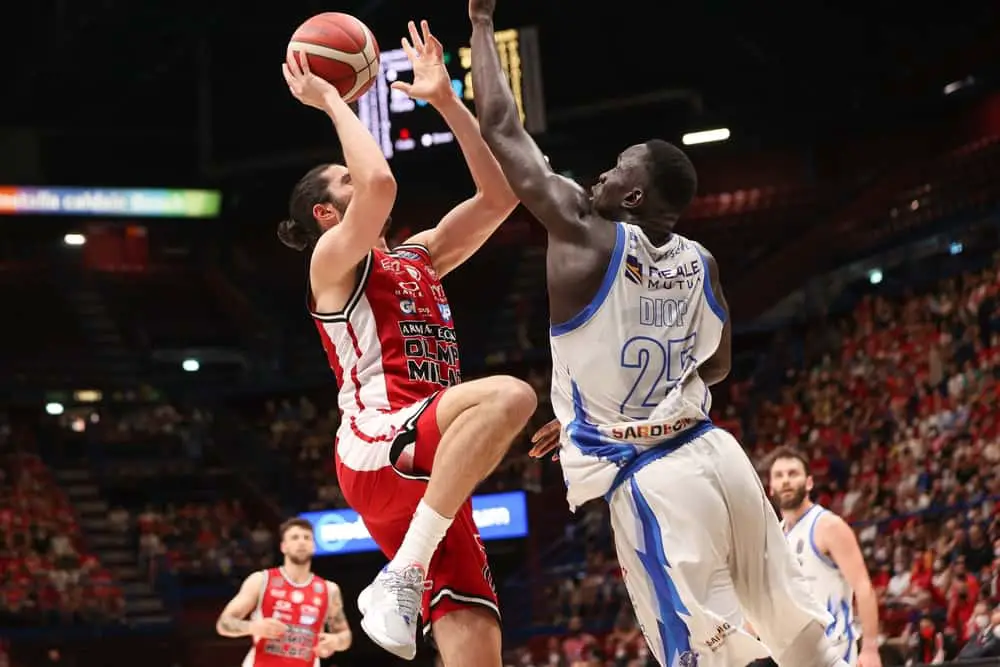
Conclusion
As you can see, there are multiple illegal defenses in basketball. Most relate to making contact with the attacking player rather than the ball. However, some, like the three-second violation, don’t depend on player contact but still count as fouls or, to be more specific, technical fouls.

